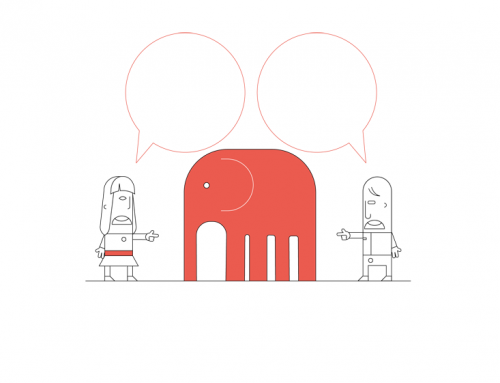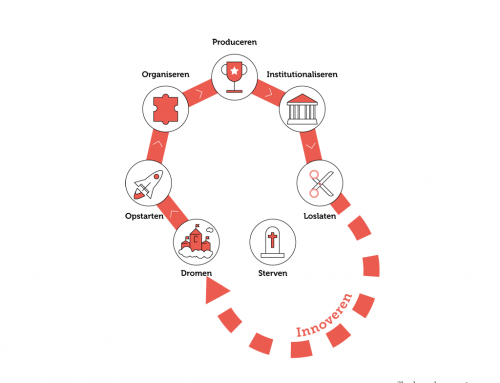Buiten!
Heerlijk! Opgeladen door het zonnetje komen we terug binnen.
Handen wassen, afscheid nemen. Vlak voor mijn coachee in haar auto stapt vraag ik haar om in 1 woord de sessie samen te vatten. Ze denkt even na en zegt dan stralend: “Eureka!”.
Sinds een paar weken is mijn “zomerseizoen” weer begonnen. Dan maak ik meer tijd voor “particuliere” coachees (ik bedoel hiermee dat ik niet alleen coach voor (werknemers van) bedrijven, maar gewoon, iedereen die het wil). Die periode loopt tot oktober. Ik coach namelijk buiten. Hoe gaat dat in zijn werk? Ofwel zitten we tussen de dieren. Ofwel gaan we samen op pad. Wat we zien, wat we ervaren, wordt -in-het-moment- gebruikt. Ik heb het geluk ergens te wonen waar we nogal wat tegenkomen. :-) Herten, pauwen, koeien, … Indirect komt de coachee tot rust, kan helderder nadenken, kan de dingen beter op een rij zitten. Ik merk het verschil met de coachings voor bedrijven die ik doe in vergaderruimtes. Daar “blijft men meer in het hoofd zitten”. Ronddraaiend met dezelfde gedachten die men in “loops” herhaalt. Buiten worden de zintuigen aangesproken. Er gebeurt iets onverwacht. Of ontroerend. Zoals een hert dat werkelijk héél dichtbij kwam kennismaken met mijn coachee. (Zo dicht dat ik een foto poste op Instagram waarop het lijkt dat het hert mijn Iphone wil opruiken.)
Ik ben nochtans niet zo’n buitenmens. Ik was niet echt een buitenkind. Opgegroeid in de Ten Eeckovenlei waar ik ‘savonds de tram zag rijden op het plafond. De weerspiegeling van de tram uiteraard. Niet de tram zelf. Dat zou pas freaky zijn. Tram 12 was dat.
Ik weet dat een mens natuur nodig heeft. Daarom coach ik buiten. Wandelcoachings. Met of zonder paarden. Of andere dieren. Kinderen werken graag met de geiten, schapen, cavia’s, katten, hond, pony’s, of zelfs de kippen…
Wat zijn de thema’s? Bij kinderen / adolescenten gaat het vaak om vriendschappen & conflicten, contact leggen en behouden, verlatingsangst, zelfvertrouwen, beheersing, zichzelf leren kennen, emoties leren hanteren, ongewenst gedrag, zelfzeker een spreekbeurt kunnen houden, omgaan met boosheid, … Ze herkennen zichzelf in onze dieren, of leren hen dingen (die ze indirect eigenlijk aan zichzelf ah leren zijn). Dingen kunnen worden benoemd op een “veilige” manier. Taboe-onderwerpen worden aan de metafoor van de dieren gehangen. Bovendien is naar “Coach Dithje gaan om vanalles met de dieren te doen” minder stigmatiserend dan naar een therapeut moeten. Omdat je een probleem hebt. Omdat je een probleem bent.
Spelenderwijs, kleine doeltjes stellen, kleine stappen zetten. Zich goed voelen. Lachen, ontroering, … dat is wat dieren bij mensen (groot & klein) kunnen doen.
Volwassenen komen vaak bij mij tijdens periodes in hun leven waarop ze verschillende zaken op een rij willen zetten in functie van een keuze (op beroeps- of relationeel vlak), een emotioneel moeilijkere periode makkelijker hanteren, verbeteren van levenskwaliteit, beter leren omgaan met stress, met emoties, meer écht zelfvertrouwen ontwikkelen en maskers kunnen loslaten, persoonlijk onderzoek mbt waarden, elk heeft een ander verhaal. Elke mens is uniek. Elke mens heeft zijn “sores”.
Ik merk hoe heerlijk mensen het vinden om, in de natuur, zichzelf onder de loep te nemen. Een klankbord te hebben. Uit hun denkkader stappen of onvermoedde hulpbronnen ontdekken dankzij een NLP-oefening. En ook al sta ik niet bekend als de meest “softe” coach, verre van – er wordt heel wat gelachen. Tja, mijn “provocatieve coachingtools” komen toch wel regelmatig naar boven. (Voor info over “provocatieve coaching”: zie Instituut voor Eclectische psychologie, of de boeken van Jeffrey Wijnberg.)
Lachen, buiten, groen, zon, dieren, … op die manier, zijn die wandelcoachings, ook voor mij, een zaligheid. Mensen daardoor dan nog zien groeien, dan kan mijn dag helemaal al niet meer stuk.
Ik twitterde onderstaand artikel vandaag. Voor de twitterlozen ziehier de copy/paste:
“Humans are quickly becoming an indoor species.
In part, this is a byproduct of urbanization, as most people now live in big cities. Our increasing reliance on technology is also driving the trend, with a recent study concluding that American children between the ages of 8 and 18 currently spend more than four hours a day interacting with technology.
As a result, there’s no longer time for nature: From 2006 to 2010, the percentage of young children regularly engaging in outdoor recreation fell by roughly 15 percentage points.
This shift is occurring even as scientists outline the mental benefits of spending time in natural settings. According to the latest research, untamed landscapes have a restorative effect, calming our frazzled nerves and refreshing the tired cortex. After a brief exposure to the outdoors, people are more creative, happier and better able to focus. If there were a pill that delivered these same results, we’d all be popping it.
Consider a forthcoming paper by psychologist Ruth Ann Atchley and her colleagues at the University of Kansas. To collect their data, the researchers partnered with the nonprofit Outward Bound, which takes people on extended expeditions into nature. To measure the mental benefits of hiking in the middle of nowhere, Dr. Atchley gave 60 backpackers a standard test of creativity before they hit the trail. She gave the same test to a different group of hikers four days into their journey.
The results were surprising: The hikers in the midst of nature showed a nearly 50% increase in performance on the test of creativity, and the effect held across all age groups. “There’s a growing advantage over time to being in nature,” says Dr. Atchley. “We think that it peaks after about three days of really getting away, turning off the cellphone. It’s when you have an extended period of time surrounded by that softly fascinating environment that you start seeing all kinds of positive effects in how your mind works.”
This latest study builds on a growing body of evidence demonstrating the cognitive benefits of nature. Although many of us find the outdoors alienating and uncomfortable—the bugs, the bigger critters, the lack of climate control—the brain reacts to natural settings by, essentially, sighing in relief.
In 2009, a team of psychologists led by Marc Berman at the University of Michigan outfitted undergraduates with GPS receivers. Some of the students took a stroll in an arboretum, while others walked around the busy streets of downtown Ann Arbor.
The subjects were then run through a battery of psychological tests. People who had walked through the natural setting were in a better mood and scored significantly higher on tests of attention and short-term memory, which involved repeating a series of numbers backward. In fact, just glancing at a photograph of nature led to measurable improvements, at least when compared with pictures of cities.
This also helps to explain an effect on children with attention-deficit disorder. Several studies show that, when surrounded by trees and animals, these children are less likely to have behavioral problems and are better able to focus on a particular task.
Scientists have found that even a relatively paltry patch of nature can confer cognitive benefits. In the late 1990s, Frances Kuo, director of the Landscape and Human Health Laboratory at the University of Illinois, began interviewing female residents in the Robert Taylor Homes, a massive housing project on the South Side of Chicago.
Dr. Kuo and her colleagues compared women who were randomly assigned to various apartments. Some had a view of nothing but concrete sprawl, the blacktop of parking lots and basketball courts. Others looked out on grassy courtyards filled with trees and flower beds. Dr. Kuo then measured the two groups on a variety of tasks, from basic tests of attention to surveys that looked at how the women were handling major life challenges. She found that living in an apartment with a view of greenery led to significant improvements in every category.
Cities are here to stay; so are smartphones. What this research suggests, however, is that we need to make time to escape from everyone else, to explore those parts of the world that weren’t designed for us. It’s when we are lost in the wild that the mind is finally at home.
A version of this article appeared May 26, 2012, on page C18 in the U.S. edition of The Wall Street Journal, with the headline: Mom Was Right: Go Outside.


